This post is also available in: Italian
Several wonderful gardens and parks can be visited also in winter: the perfect time of the year to observe the very shape of the tree crowns, the evergreen species, topiary works of arts, as well as the very design and architectural arrangement of many fascinating green facilities. Not to mention some eye-catching early blossoming.
Emilia-Romagna: in Vigolzone (near Piacenza), Grazzano Visconti Castle is a fortress dating back to 1395, surrounded by a beautiful park designed and built between the end of the XIX century and the beginning of the XX century by the Duke Giuseppe Visconti di Modrone. Some further modifications have been made in recent years by the landscape architect Oliva di Collobiano. Thus, the castle now features an Italian garden (with plants and topiary hedges, statues and fountains) and an English one full of Lebanon cedars, plane trees, bamboo and yews. The castle can be visited only with previously booked guided tours (min. 20 people per group).
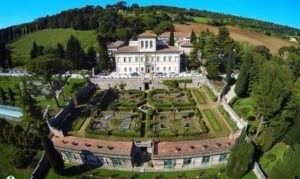
The same kind of guided visits are available at Villa Caprile, located within the Monte San Bartolo Natural Park, near Pesaro. The main building, dating back to 1640 and further modified during the XVIII century, is embellished with gardens arranged on three terraces, water games, formal flower beds, and potted citrus fruits, as well as a pomarium with fruit plants and aromatic herbs.
The villa currently houses the headquarters of the Antonio Cecchi Agricultural Technical Institute and, during the summer, it hosts several theatrical performances. The villa and its gardens can also be visited in winter, although booking is always required for guided tours with at least 30 people.
When in Florence, visitors should not miss Giardino dei Semplici, the third oldest botanical garden in the world: dating back to 1545, it includes Italian-style flower beds, several majestic trees, exceptionally beautiful even when bare, shrubs, small plants and bulbous varieties blooming as early as February, like mimosas and daffodils. There’s also a large greenhouse with tropical plants and a lemon grove with a mesmerizing scent of blooming citrus. Please note that in the early months of the year, the garden is open only on Saturdays and Sundays.
Not to be missed are also the famous Boboli Gardens: basically a large historical park behind Palazzo Pitti and Forte di Belvedere. It is one of the most important examples of Italian gardens in the whole world; with its intriguing maze of hedges and eye-catching plants, it offers truly spectacular sights all year long. Not to mention its wealth of green galleries, exquisite architecture, sumptuous fountains and several precious sculptures.
Another must-see garden is the Botanical one of Lucca, which can be visited from November to March 20th, only by reservation. It was built in 1820 by Maria Luisa di Borbone and it still preserves several important collections of exotic plants, some greenhouses, many centuries-old trees, and a precious multitude of local flora. Not far from there, in Collodi – a hamlet of the Municipality of Pescia, visitors will be amazed by Pinocchio Park: a commemorative garden dedicated to the famous book by Carlo Lorenzini. It was designed by Pietro Porcinai, the greatest Italian landscape painter of the XX century, and it is animated by mosaics, bronze sculptures, and some quaint buildings. The vegetation has been embedded with the works of art by many famous artists, including Emilio Greco, Venturino Venturi and Pietro Consagra – they represent the main events depicted by Carlo Lorenzini in his famous tale. There’s also a museum, a virtual library, and an animated mechanical theatre dedicated to the legendary mischievous puppet-boy.
The Botanical Garden of Siena it’s also worth visiting in winter. It dates back to 1588 and it was further enriched in the 1990s with new creations dedicated to the different ecosystems. Nearby, there’s the Botanical garden of Pisa, opened in 1543 and possibly the oldest in the world. Having been moved to the current location over time, the actual oldest botanical garden would be that of Padua.
In Lazio, visitors should go to Villa d’Este in Tivoli: a masterpiece of the Italian Renaissance acknowledged as one of UNESCO World Heritage Sites. The sumptuous palace overlooks an extraordinary terraced garden, which includes the exquisite remains of ancient villas, caves, waterfalls, water games and an incredible “hydraulic music” system.
In the province of Viterbo, south of the medieval village of Bagnaia (on the slopes of the Cimini mountain range) there’s the XVI century Villa Lante: it features a large Italian garden of box hedges, several fountains and sculptures.
On the other hand, Villa (or Palazzo) Farnese in Caprarola, is one of the best examples of a Mannerist-period residence: it was built in 1547 and it offers splendid halls and rooms, as well as two wonderful Italian gardens, with a parterre, hedges and fountains.
In Campania, the spectacular Royal Palace of Caserta and its park await whoever would like to visit a historic residence of the royal house of the Bourbons from Naples, also acknowledged as a World Heritage Site by UNESCO. Its construction started in 1751, designed and supervised by the famous architect Luigi Vanvitelli – one of the greatest artists of the Rococo style. The palace is surrounded by a huge park which includes the Italian Garden (with impressive hydraulic engineering solutions), and the English one, built for Queen Maria Carolina from Austria and featuring the very landscape style created by William Kent in 1730.
The city centre of Salerno treasures a real gem: it’s Giardino della Minerva, a terraced botanical garden built in the Middle Ages and mainly supplying the students of the local Medical School with medicinal herbs. The garden retains the original and most elaborate water distribution system, including canals, basins and fountains. This green facility currently hosts over 200 medicinal plant species, including several rare varieties, as well as the legendary, and allegedly powerful mandrake.
Giardini La Mortella, on the island of Ischia, can also be visited in winter. Partly designed by Russel Page and their owner, Susana Walton (the wife of the English composer William Walton), in the 1960s, these gardens look like a real piece of paradise on Earth. There are over 3.000 exotic Mediterranean species, several streams, lakes, fountains, ponds, and terraces. From November to mid-March, this wonderful facility is open to visitors every Thursday, from 2.30 pm. That’s the best time of the year to admire the elaborate shapes of the palms and the ferns, as well as the spectacular blooming of winter camellias, aloe, wattles and sugarbushes.
Sicily is another great travel destination as it’s rich in wondrous historical gardens.
In Palermo, for instance, there are three of them: the Botanical Garden, Palazzo Butera, and Villa Malfitano. Dating back to the late 1700s, the Botanical Garden hosts about 12.000 plant species, mainly coming from South Africa, Australia and South America; it also features valuable collections of frangipani, marsh plants, palms, and true wonders, such as a gigantic <em>Ficus macrophylla</em>, which is also the symbol of the garden.
Palazzo Butera is a large XVII/XVIII century building, standing in the historic district of Kalsa: restored two years ago by Francesca and Massimo Valsecchi – with excellent contemporary intervention – it’s a peculiar museum of the precious art collection of its owners; it also features courtyards and a large terrace with several exotic plants, such as jacaranda, jasmine, bougainvillaea, papyrus, banana trees and <em>Solandra maxima</em> – an impressive evergreen climbing species.
Villa Malfitano, also known as Villa Malfitano Whitaker, is a XIX century building with neo-Renaissance style from the second half of that very century, designed by the architect Ignazio Greco. It’s surrounded by a 17-acre park, while its halls and rooms are very beautiful and exquisitely decorated with botany-themed frescoes. There’s also an English garden – built in 1886 by Joseph Whitaker, and a real <em>arboretum</em> with more than 250 plant species, mostly tropical or subtropical.
On the road to Catania, in Sant’Agata Li Battiati, you will come across the enchanted Paternò del Toscano Park: a special terraced rock garden, made of Mediterranean and exotic plants from all over the world. It also includes citrus groves, vineyards, lava outcrops and debris modelled by the landscape architect Ettore Paternò. Guided visits are the only way to discover this Sicilian treasure and must be booked in advance.
In Taormina, on the other hand, there’s Casa Cuseni, built in the early 1900s by the English painter Robert Hawthorn Kitson. Its garden is made of terraces, with fountains and interesting architectural elements, designed both by Kitson and by other artists who used to dwell there.
The vegetation includes citrus and other fruit trees, bougainvillaeas, wisteria, jasmine, iris, vines, and roses of the past. Kitson’s granddaughter Daphne Phelps introduced some native botanical species as well.
In Acireale, you shouldn’t miss the Garden of Casa Pennisi, which can be visited only by reservation, even in winter. It’s one of the few ancient gardens that have survived property speculation and boasts harmonious combinations of Mediterranean and exotic plant species. There are centuries-old palms, yuccas, strelitzia, cycas, and giant jacarandas, surrounded by walnut trees, maritime pines, mulberries, hydrangeas, bush lilies, hibiscus and roses.
Finally, in the city centre of Catania, there’s the Botanical Garden of the local University: it was built in 1858 by the Benedictine monk Francesco Tornabene Roccaforte. It still hosts some 2.000 plants, including succulent varieties, palms, and about 100 specimens from 80 different species, as well as several Sicilian endemisms. Among other things, this facility offers some most evocative sights at night, in the full moonlight. Please visit check the opening hours on the official website.
In the outskirts of Catania, namely in Mascalucia, there is the luxuriant Etna Botanic Garden (the actual garden of Villa Trinità), built over the years by Salvatore Bonajuto, a landscape architect and a renowned artist. It’s rich in Mediterranean and exotic species, palm trees, and succulent plants, as well as flowering trees and shrubs, planted among large lava boulders and contemporary sculptures, next to the ancient citrus grove. There’s also a B&B facility and the “Under the Jacaranda in bloom” market exhibition.
Not far from Catania, in Villasmundo Melilli (in the province of Syracuse), visitors shouldn’t miss the Garden of San Giuliano: 148 acres owned by the Marquis of San Giuliano, almost entirely planted with citrus groves, except for some 9 acres dedicated to the exclusively ornamental garden, partly redesigned in the 1990s by the landscape architect Oliva di Collobiano. This very part of the estate features four sections: the Arab garden, with pools of water and water lilies, the Mediterranean garden of roses and grapefruits, the area planted with tropical palms and cacti, and officinal corner with lavender, myrtle, sage, thyme, helichrysum, and other medicinal plants.
This post is also available in: Italian


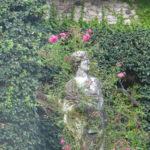
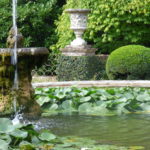
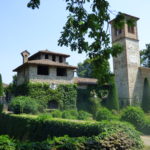
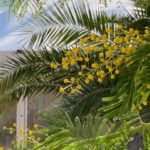
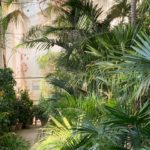
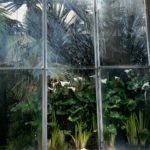
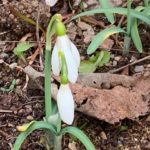
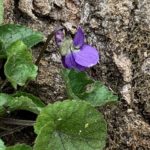
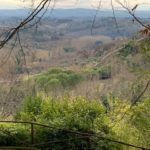
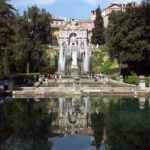
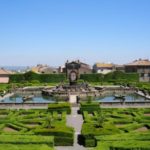
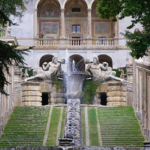
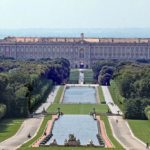


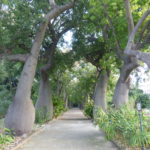
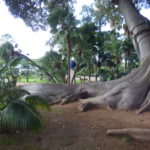
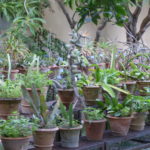
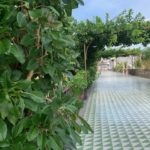
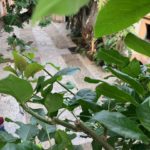
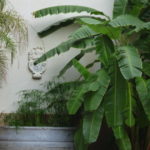
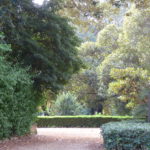
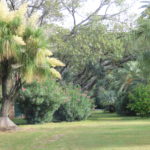
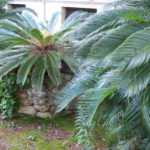
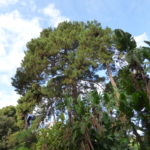
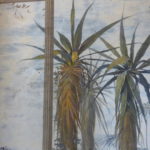
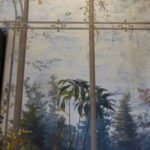
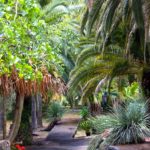

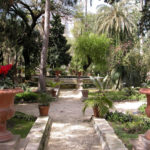
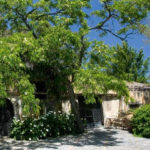
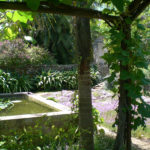
Leave a Reply